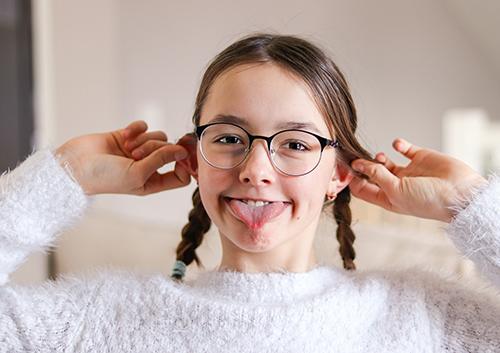 Our team at Andrew J. Spiridigloizzi, D.D.S. recently learned that in the decade between 2000 and 2010, the amount of adults who regularly visited their dentist declined, according to research
Read more
Our team at Andrew J. Spiridigloizzi, D.D.S. recently learned that in the decade between 2000 and 2010, the amount of adults who regularly visited their dentist declined, according to research
Read more
My Blog
-
Fewer Adults are Visiting the Dentist
updated: Apr. 30, 2024
 Our team at Andrew J. Spiridigloizzi, D.D.S. recently learned that in the decade between 2000 and 2010, the amount of adults who regularly visited their dentist declined, according to research
Read more
Our team at Andrew J. Spiridigloizzi, D.D.S. recently learned that in the decade between 2000 and 2010, the amount of adults who regularly visited their dentist declined, according to research
Read more
-
How does whitening toothpaste work and how effective it is at whitening teeth?
updated: Apr. 23, 2024
 Brushing your teeth twice a day with fluoride toothpaste that has the American Dental Association seal of approval can help prevent tooth decay and relieve other conditions, such as bad
Read more
Brushing your teeth twice a day with fluoride toothpaste that has the American Dental Association seal of approval can help prevent tooth decay and relieve other conditions, such as bad
Read more
-
Make Every Day Earth Day
updated: Apr. 16, 2024
 Earth Day began in 1970 as an event to raise awareness of our environment. What began as a single day in April is now recognized around the world to bring
Read more
Earth Day began in 1970 as an event to raise awareness of our environment. What began as a single day in April is now recognized around the world to bring
Read more
-
What is hyperdontia?
updated: Apr. 09, 2024
 When a child is born, he or she will have 20 primary teeth and 32 permanent teeth. But sometimes kids are born with additional teeth, and our team at Andrew
Read more
When a child is born, he or she will have 20 primary teeth and 32 permanent teeth. But sometimes kids are born with additional teeth, and our team at Andrew
Read more
-
Oral Cancer Awareness Month
updated: Apr. 02, 2024
 Happy Oral Cancer Awareness Month! We know oral cancer can be kind of a scary topic, but it’s worth using this opportunity to learn about the disease and spread knowledge
Read more
Happy Oral Cancer Awareness Month! We know oral cancer can be kind of a scary topic, but it’s worth using this opportunity to learn about the disease and spread knowledge
Read more
-
Does Your Child Need Endodontic Treatment?
updated: Mar. 26, 2024
 Baby teeth come with a built-in expiration date. That charming first smile is meant to make way for a healthy, beautiful adult smile. Unfortunately, before they are ready to make
Read more
Baby teeth come with a built-in expiration date. That charming first smile is meant to make way for a healthy, beautiful adult smile. Unfortunately, before they are ready to make
Read more
-
Keeping Our Teeth Healthy as We Age
updated: Mar. 19, 2024
 Decades ago, it was just expected that getting older meant losing teeth. But today’s dental practices and treatments help us defy expectations. How can we keep our teeth healthy as
Read more
Decades ago, it was just expected that getting older meant losing teeth. But today’s dental practices and treatments help us defy expectations. How can we keep our teeth healthy as
Read more
-
Go Green for St. Patrick’s Day
updated: Mar. 12, 2024
 Millions of people, around New Hartford, New York and beyond, wear green on St. Patrick’s Day so they can show their spirit for the holiday and avoid getting pinched. While
Read more
Millions of people, around New Hartford, New York and beyond, wear green on St. Patrick’s Day so they can show their spirit for the holiday and avoid getting pinched. While
Read more
-
Good Nutrition Leads to Healthy Mouths
updated: Mar. 05, 2024
 At Andrew J. Spiridigloizzi, D.D.S., we know the most common oral health diseases are tooth decay and periodontal disease (or gum disease), and both are among the easiest to prevent.
Read more
At Andrew J. Spiridigloizzi, D.D.S., we know the most common oral health diseases are tooth decay and periodontal disease (or gum disease), and both are among the easiest to prevent.
Read more
-
Pregnancy: What should I know about my oral care?
updated: Feb. 27, 2024
 the doctor and our team at Andrew J. Spiridigloizzi, D.D.S. know this is an exciting time as you anticipate the arrival of your new little one. We want to take
Read more
the doctor and our team at Andrew J. Spiridigloizzi, D.D.S. know this is an exciting time as you anticipate the arrival of your new little one. We want to take
Read more
-
Treatments for Tooth Discoloration
updated: Feb. 20, 2024
 Congratulations! You’re getting married! Wow! It’s your twentieth reunion! New job? Great news! No matter the occasion, large or small, you want to celebrate it with your whitest, brightest smile.
Read more
Congratulations! You’re getting married! Wow! It’s your twentieth reunion! New job? Great news! No matter the occasion, large or small, you want to celebrate it with your whitest, brightest smile.
Read more
-
The Start of Valentine’s Day
updated: Feb. 13, 2024
 Valentine’s Day, also known as Saint Valentine’s Day, has been said to originate with a Catholic priest named Valentine several thousand year ago. Valentine defied the emperor at the time
Read more
Valentine’s Day, also known as Saint Valentine’s Day, has been said to originate with a Catholic priest named Valentine several thousand year ago. Valentine defied the emperor at the time
Read more
-
What’s an intraoral camera?
updated: Feb. 06, 2024
 One of the greatest features our team at Andrew J. Spiridigloizzi, D.D.S. offers is the ability to see first-hand how we can help our patients. While X-rays help us detect
Read more
One of the greatest features our team at Andrew J. Spiridigloizzi, D.D.S. offers is the ability to see first-hand how we can help our patients. While X-rays help us detect
Read more
-
Alleviate Tooth Sensitivity
updated: Jan. 30, 2024
 There’s nothing like the simple seasonal pleasures. What’s more enjoyable than a cup of hot apple cider on a blustery winter day, or a tall glass of ice water in
Read more
There’s nothing like the simple seasonal pleasures. What’s more enjoyable than a cup of hot apple cider on a blustery winter day, or a tall glass of ice water in
Read more
-
The Most Common Causes of Gum Disease
updated: Jan. 23, 2024
 Unless you're aware of the signs and symptoms of gum disease and how it's caused, it's possible that you may have unknowingly developed it. Often painless, gum disease -- or
Read more
Unless you're aware of the signs and symptoms of gum disease and how it's caused, it's possible that you may have unknowingly developed it. Often painless, gum disease -- or
Read more
-
When to Begin Dental Care for Your Baby
updated: Jan. 16, 2024
 Children’s oral health differs from the needs of adults in many ways. It’s vital for you to understand what your child needs to keep his or her teeth healthy. the
Read more
Children’s oral health differs from the needs of adults in many ways. It’s vital for you to understand what your child needs to keep his or her teeth healthy. the
Read more
